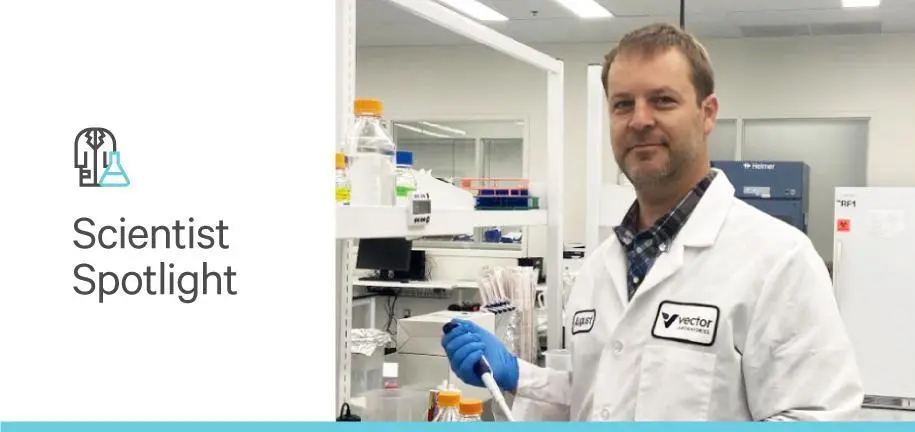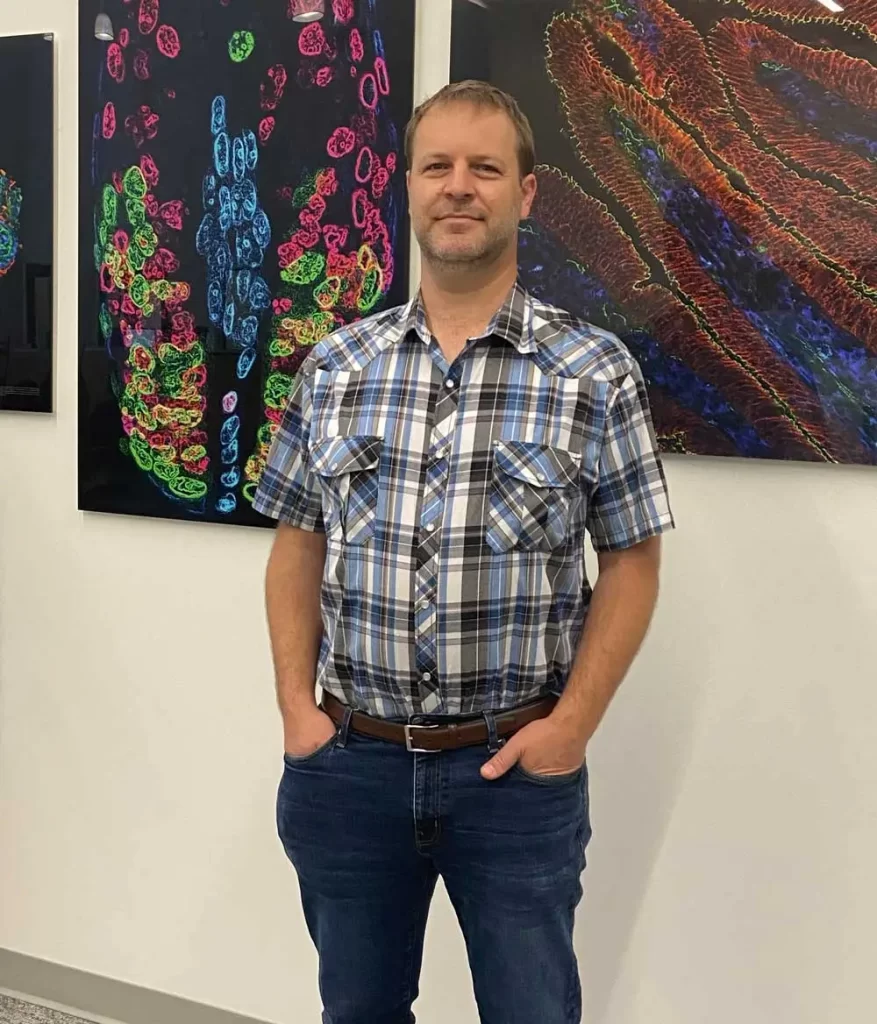
Vector Laboratories is closed for the President’s Day on Monday, February 19th. We will be back in the office on Tuesday, February 20th.
We will respond to emails upon our return. Have a wonderful day.
Menu
Vector Laboratories is closed for the President’s Day on Monday, February 19th. We will be back in the office on Tuesday, February 20th.
We will respond to emails upon our return. Have a wonderful day.


Creating a new product is no easy task. From developing the idea to production and marketing, there are a lot of steps and contributions necessary for a successful launch. Making GlysiteTM Scout Glycan Screening Kits, Immunofluorescence, which are fully integrated kits for the detection of glycan expression in tissue sections using a curated lectin selection, was no exception. We sat down with Senior Scientist August Estabrook to learn more about the development of this brand-new product.
The Glysite Scout Screening Kit is a carefully curated panel of lectins that will bind specific glycan types for individual specimens. This kit is really designed for researchers in adjacent fields to glycobiology or fields where they might have a system where glycosylation may be impacting their biology. This is a way for them to do an initial scout or screen to assess whether glycosylation may be important for their system. It’s a complete kit that includes all the reagents needed to do the analysis and comes with working protocols.
The main difference is the selection of lectins that are included in the kit and the fact that the kit includes all the ancillary reagents to make the analysis and the workflow streamlined. Let’s say you’re a cancer biologist and you don’t really know a lot about glycosylation but you think it might be impacting your system; it might be a little daunting to look at the lectin kits and try to figure out the specificities and understand the exact glycosylation you’re looking at. So, these glycan screening kits are curated to encompass a lectin that binds each of the eight major glycan types taken from Dr. Laura Mahal’s paper on lectin binding. It should provide a very broad analysis of the different glycosylation changes because we also included all the components needed for complete tissue visualization. Those aspects make this kit stand out from the traditional lectin kits we offered before.
We’ve been talking to customers a lot recently, and it became very clear that there are a lot of people who are in very similar fields. For example, in cancer research, there’s a lot of overlap where people are discovering that glycosylation is really important in their system and didn’t know before because glycosylation just isn’t taught very prominently in universities. There’s a lot of people who don’t have a strong understanding of glycosylation, hence they tend not to look there.
People are now beginning to appreciate that glycosylation has a lot of roles in biology. They now want to go and examine if glycosylation is important in their system, but they don’t really know how to do that. So that was the problem we wanted to solve; we wanted to provide a kit for folks that think there might be glycosylation or that glycosylation might be important to their system but aren’t a glycobiologist.
Any time you take a blue sky idea and get all the way to product launch, it can be a fairly long journey. So again, we were speaking to customers and identified there was a clear need in the field for something that’s very user-friendly, easy to use, and really targeted to people who don’t consider themselves a glycobiologist. We already offered lectin kits and had all the detection reagents. So, we spent a lot of time thinking about which lectins to include, what ancillary reagents would complement the lectins, and what kind of detection modality.
There was a lot of brainstorming early on to sketch out what the product might look like. Then you consider the simple things like what bottle does it go in? How much material do we put in each one? What is the box going to look like? In general, there’s also a lot of process validation. Almost all the products in this kit are already offered by Vector Laboratories, so there weren’t a whole lot of technical challenges for this kit, which made it nice. We were able to go from blue sky idea to launch in something like 6–9 months, which is extremely fast.
The biggest challenge with this one, which you also encounter in most other product developments, is the orchestration of all the different departments and the different parts to come together for a sort of a pinnacle launch date. You got marketing involved, you got tech support, you got shipping—really every department in the company plays a part in the launch process, and keeping all those departments working in concert is never easy.
I always like taking an idea and seeing it go all the way to product launch. That entire process can sometimes take years and a hundred people, so to be able to do it with just a few sets of hands and in less than a year was pretty nice. The other part is that you’re empowering biologists to be able to look at this whole new world, so having that appreciation of what this will empower people to do is also very rewarding.
I think the greatest benefit is going to be to researchers who don’t really know about glycobiology but have clues that it might be important—or if they just want to go and look to see if glycosylation is important. I think that is going to empower a whole new wave of medicinal and clinical innovations. This tool we’ve developed will really help bring in new users and help the field grow by bringing in adjacent fields.
This is a screening kit. It’s a scout, so it’s by no means completely all-inclusive. We picked one lectin from each category. If a user sees a change in their biology using this kit, they should go and dig deeper, and they are more than welcome to reach out to us to help guide that. For example, if you see a change in fucosylation with our kit, you’re going to want to go and dig deeper and get more lectins that bind some of the other different glycan types that are fucosylated. This is really a tool for users to see the tip of the iceberg and empower their journey to discover everything that’s down under the water that they don’t really know about and can’t see yet.
We hope you enjoyed learning about what goes into developing a new product. If you’re interested in seeing how glycobiology can empower your research, be sure to check out our Glycobiology Resources page, and stay tuned for more behind-the-scenes from the blog.





Stay in the Loop. Join Our Online Community
Together we breakthroughTM

©Vector Laboratories, Inc. 2024 All Rights Reserved.